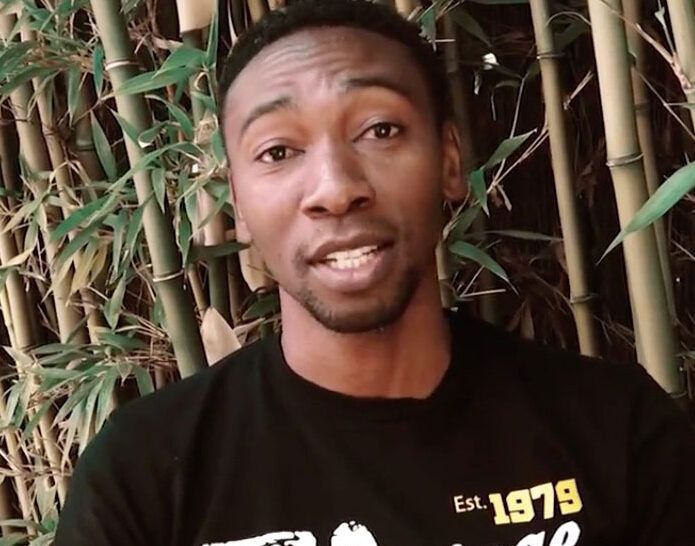‘I like to chuckle that the Antigua distillery is the only place in the world where you get the French and the English working together to produce anything of value!” says Antigua Distillery’s Calbert Francis.
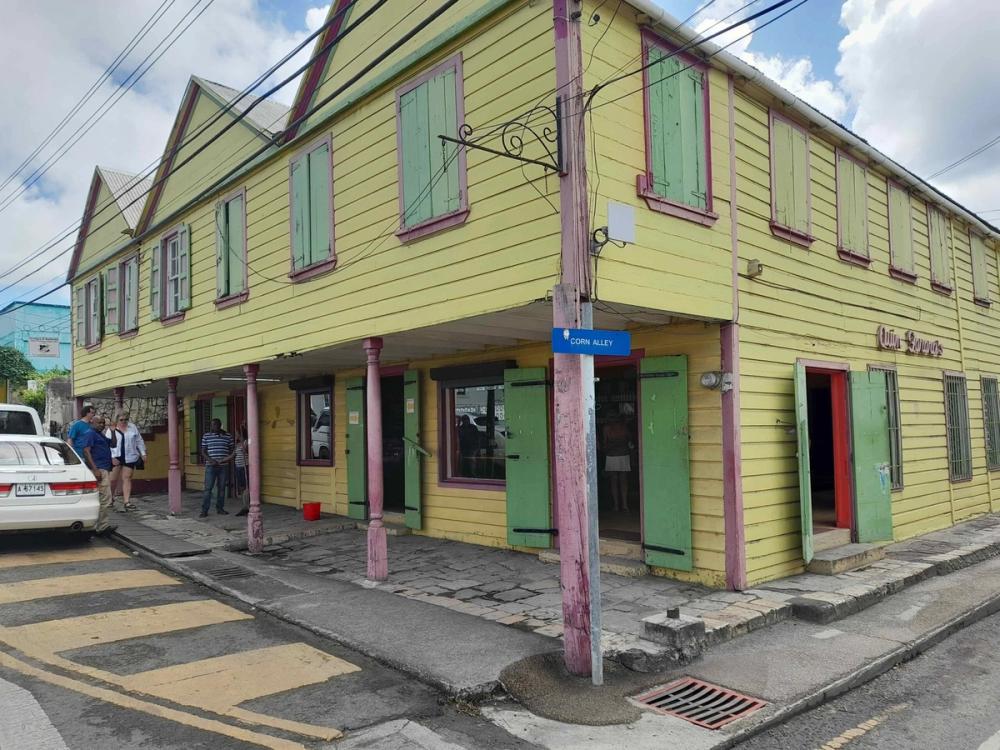
Last of a kind: Quin Farara rum shop, St John’s, Antigua
Rum lovers are in for a treat when Antigua Distillery Ltd, one of the oldest companies on the island, makes a special release on June 3 to celebrate its 90th anniversary. This will be an ‘English Harbour’ rum that has been matured for 19 years in Bourbon casks (44% abv). The asking price? A cool US$333 (or £269 at the time of writing). Around 1200 bottles will be available for sale, with the UK likely to get an allocation of around 60.
“We’ve been planning this for a couple of years and wanted something very, very special for the anniversary celebration in June,” Calbert Francis, the company’s sales and marketing VP, told me during a visit to the distillery’s head office in Antigua. “We wanted the number 9 inside all the figures: 90th anniversary, 19 years, selling for 900 Eastern Caribbean dollars*. Our founders, who set the company up, came from Madeira as indentured servants in the early 1900s. They started blending their own rums and opening up their own shops in St John’s. Then eight of them pooled their resources to set up the distillery, which cost £2,500 to build.”
Antigua Distillery was incorporated in 1933, having officially opened its doors in 1932. Fourth generation members of four of the founding families are still involved in the running of the business – namely Farara, DeFreitas, Diaz and Fernandez. “Paul Farara is chairman of the board – he’s second generation and in his nineties,” Francis said. “His father was one of the founders, and his niece Lisa runs the Quin Farara rum shop in St John’s, the last functioning one that our founders started.”
English Harbour’s new lease of life
With premium rum one of the fastest growing sectors globally, Francis is hoping exports to the UK of the company’s flagship brand, the 5-year old English Harbour, can pick up again after the Covid pandemic and a change of British importer. “Our distribution in the UK has not been the best,” Francis professed. “We were with Spirits Elite there but changed last year to the Spirit Cartel, who have a better distribution network, covering the entire UK, and also a more robust sales team, near Paddington.
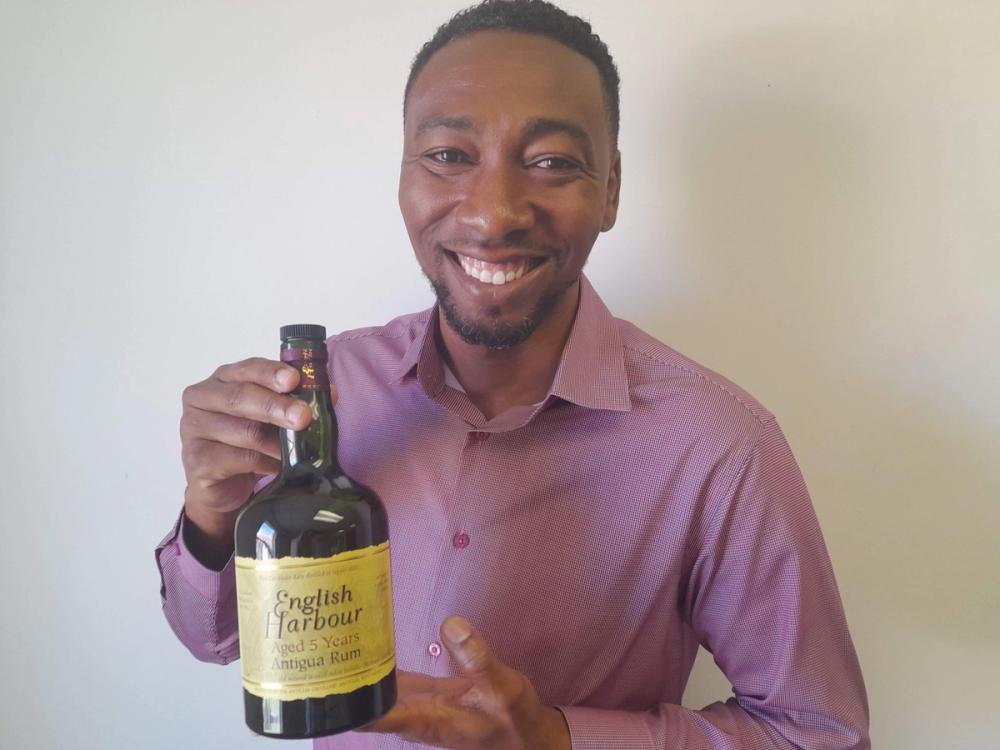
Calbert Francis: “Whenever there’s a party in heaven, the angels choose Antigua.”
“We would really like to increase exports to the UK. For me, it’s a shame that English Harbour is not a household name there, simply because of the name and what it represents. There’s history around the name: the British naval fleet had its HQ in Nelson’s Dockyard at the southern tip of the island in English Harbour, so the rum culture in Antigua is very strong.
“I’d say that 40% of our total rum sales is consumed in English Harbour alone in a 6-month period – by Antiguans and visitors. There are a lot of bars and restaurants there, as well as a couple of hotels, and you have the ships coming in. That whole sailing culture is really a rum culture – sailors used to get their tot of rum. When you look at the spirits consumed in English Harbour, rum is miles ahead of everything else. I think any bar in England would be proud to serve rum that has ‘English’ on the label. So it is quite disappointing that over the years we haven’t had that uptake. I think it’s just because of the distribution issue and not having enough resources in that distribution team. But going forward, I do see all that changing.”
UK imports of English Harbour rum in 2022 were actually zero. “That’s because we made the change of distributor then,” Francis revealed. “In 2021, it was maybe 200 nine-litre cases, the same figure pre-Covid. Germany, our number one market, takes two containers a year – that’s 2200 cases, all sent to our warehouse in Rotterdam. The USA is down the pecking order – we were in 30 states, but are now down to 16 but New York and California are the only tier one states we have to conquer. Canada’s another big market for us.”
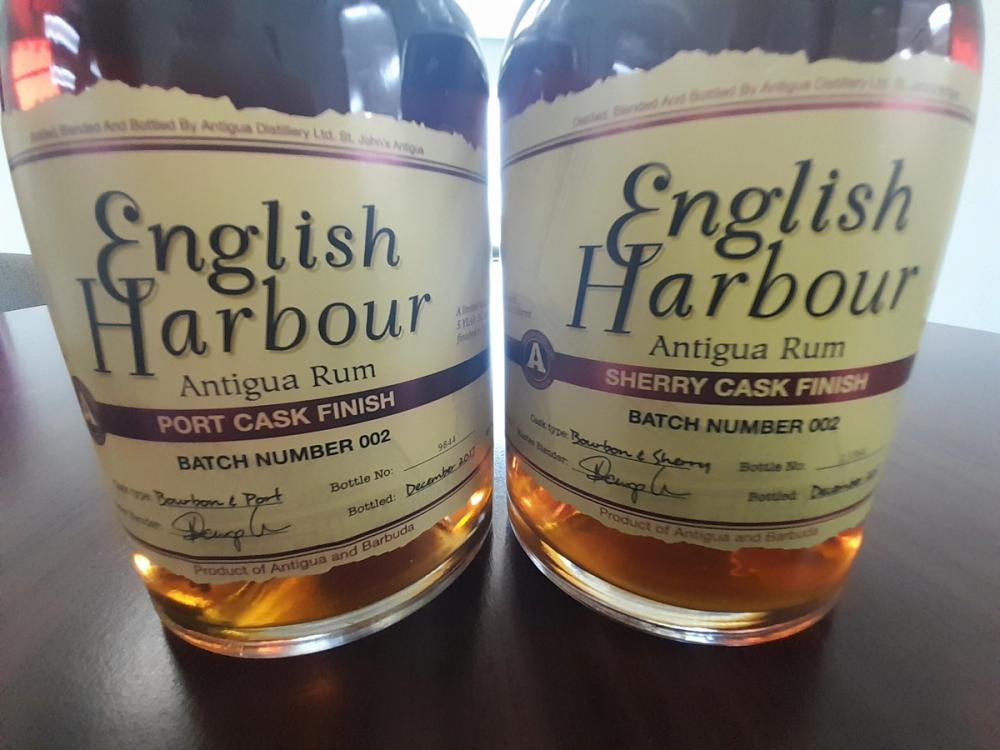
Unique flavours
Every Caribbean island’s rum is different in character, and Francis is a convincing salesman when it comes to pushing his own.
“What makes our English Harbour rum unique is a couple of things. First, we do open-top fermentation to get the benefit from bakers’ yeasts which have such consistency of flavour. Secondly, in terms of our still, I’ll go out on a limb and say we have the only continuous column hybrid copper still in the world. Our still is 100% copper, a Coffey-design one with two columns. The patent of the Coffey still was bought out by a UK company, John Dore. The two columns were modified into four columns to fit the height of the distillery. Our fifth column is from a previous French Savalle still we had, installed in 1964 but de-commissioned in 1991 when we put in the Dore still. But we kept the rectification column from the Savalle still and fused it with the Dore still. I like to chuckle that the Antigua distillery is the only place in the world where you get the French and the English working together to produce anything of value!”
The Antiguan climate, together with its exceptionally low rainfall, is another key influence on the character of English Harbour rum.
“Because our still is copper from start to finish, it tends to create a distillate that is very clean,” Francis continued. “But because Antigua is so hot, and historically the driest island in the Caribbean, we age rums quicker than any other rums in the region. Ours normally taste a bit more mature than what they say on the label. We used to age barrels lying down, and the angel’s share was ridiculous – up to 11%. I joke that whenever there’s a party in heaven, the angels choose Antigua. But after we started ageing standing up, we saw our loss came down to about 7-8%.”
The company’s cask-finished English Harbour rums are generally aged for five years in Bourbon barrels before spending 3-12 months in Port, Sherry or Madeira casks. Master distiller Sheldon Tucker and master blender Mario Wade then add around 10% of 10-year old rum into the final blend, bottling at an abv of 46% rather than 40%. No caramel is added. “All the rums are very different and each has its unique personality,” Francis mused.
“The port finish is the most subtle of the range. We get the barrels from Royal Porto Company that were used for their tawny port. So those casks are extremely old. The rum stays in the cask for around 9-12 months because it takes longer for those tawny flavours to integrate. The sherry butt finish is by far the most expressive – it’s the showpiece in the range, being very flamboyant and flashy. We use Oloroso sherry casks that are fairly new – four to five years old – so the rum only stays in those for three to four months. Then there’s the four different Madeira casks where the rum ages for five to six months – Sercial, Verdelho, Bual and Malmsey. They produce rums that are very nutty and marzipany – really unique. We don’t do a 15-year old, but we released a 25-year old in 2016 to celebrate a special anniversary of Antigua’s independence in 1981, and now there’s the 19-year old for our 90th anniversary.”
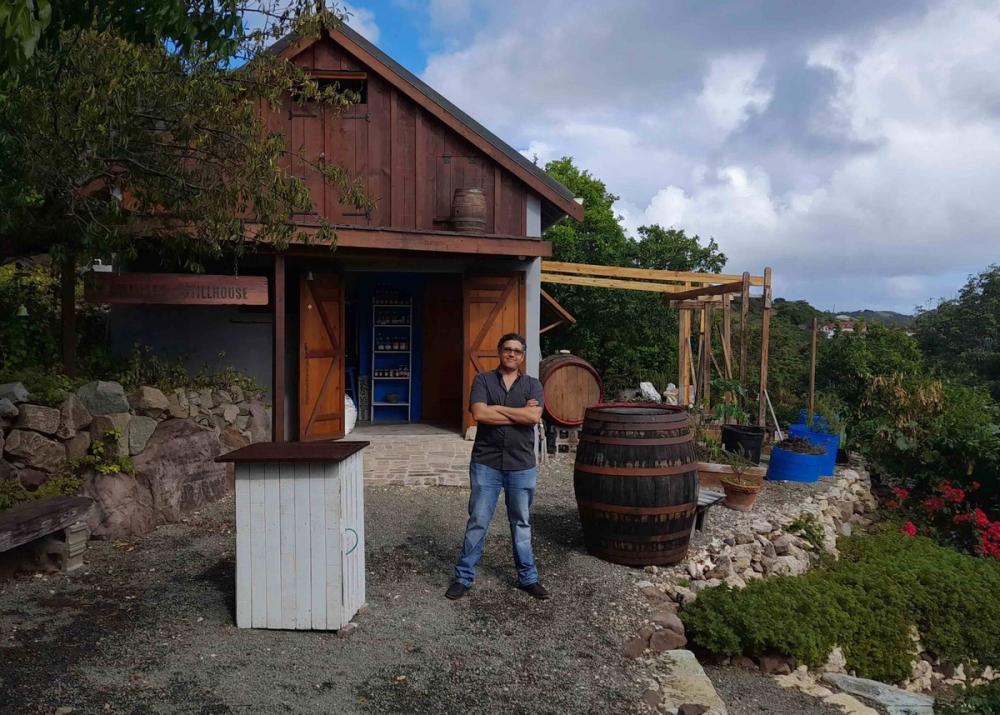
David Murphy: making small batch gin at Antilles Stillhouse
Antilles Stillhouse: Antiguan spirits on a different scale
By delightful contrast is the newly-established Antilles Stillhouse. Here, in his family’s house overlooking English Harbour, David Murphy has set up a garagiste operation making two gin labels as well as a ‘fevergrass’ spirit and a pastis. After growing up on Antigua, where his father was the island’s archaeologist, Murphy became an assistant winemaker in Canada for 10 years before returning to Antigua in 2016 to become a distiller.
“I’d got into distillation in Canada, and realised you can do it anywhere,” he said. “It was something we could bring here where nothing but rum and beer was produced. Here there’s no juniper, which I import from eastern Europe, but I’m more about the other botanicals. I use star anise, Caribbean bitter orange, Christmas bush leaf, cinnamon from Dominica which is amazing, nutmeg from Grenada, black pepper, acacia blossom and cardamom. And I make my own neutral alcoholic spirit from brown sugar. I’ve got a pot still – a hybrid with a column on top – and have to triple distil.”
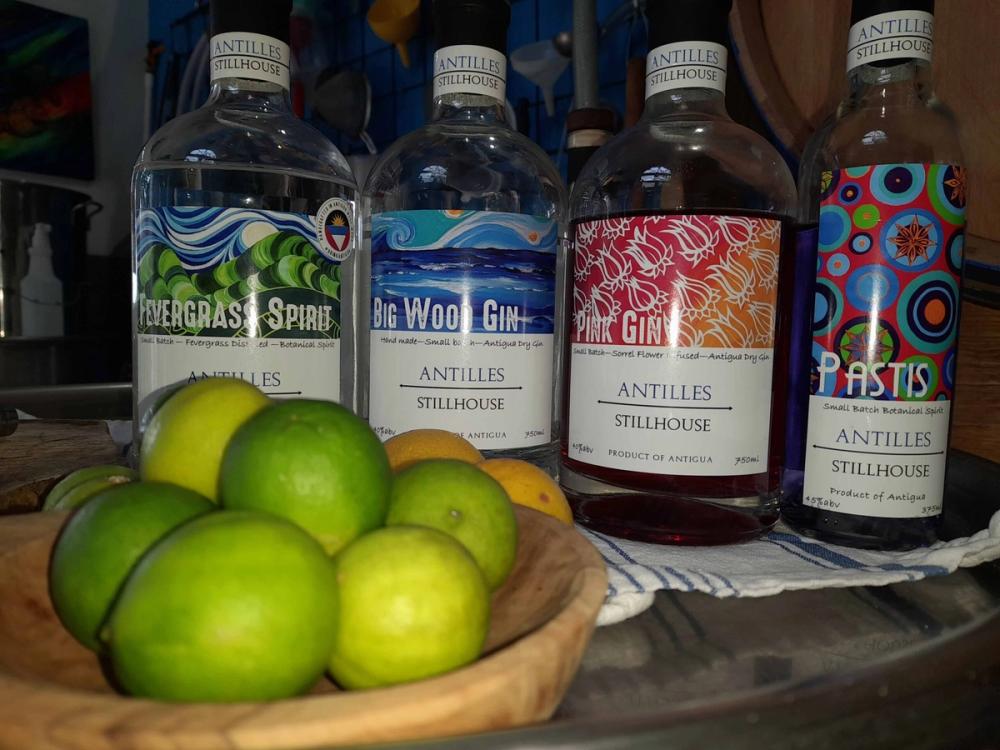
English Harbour rum
Murphy’s annual production is 400-500 bottles, of which the majority is his ‘Big Wood Gin’, although his ‘Pink Gin’ makes up a third. The fun Caribbean-style labels are designed by his wife. Retailing at US$37 per bottle, he says he can’t keep up with demand, with nearly all his stock sold at local liquor stores, restaurants and hotels.
“All the labels speak of sense of place,” he declared. “The Pink gets its colour from sorrel, a variety of hibiscus which gives it tart acidity, while the fevergrass’ only botanical is lemon grass. I aim for lots of flavour.” The Big Wood was a personal favourite, with its strong citrus nose and full body with lingering bitterness on the finish. A cracking gin to go with the island’s great English Harbour rums.
*(2.7 EC$: 1US$)
Geoffrey Dean was a guest of The Great House, Antigua
